Types of Tea
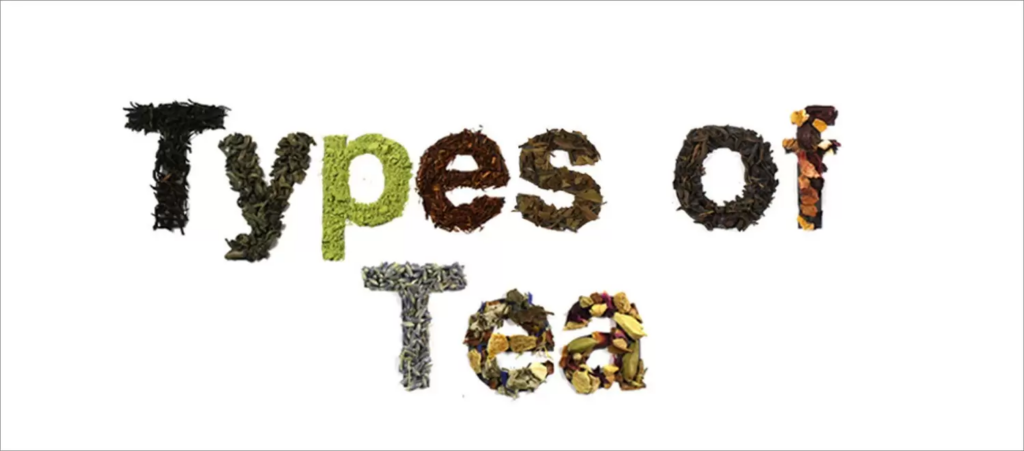
When one is introduced to tea, usually as a small child, it is often Black Tea, most likely in Tea Bag form. Perhaps a little milk is added, perhaps even sugar. Regardless, the sheer enjoyment of that first sip is, for most of us, unforgettable, there are so many different types of tea out there.
And for many years after, we are thought to believe that Black Tea is the only Tea in existence. But knowledge develops over time – today, most likely due to the internet – as does our tastes. It is then, and only then, that we discover a world of possibilities and the many different Types of Tea.
Of the 162 million cups of Tea drunk in Britain every day or 60.2 billion cups yearly, 78% is Black Tea, 20% is Green Tea, while 2% is the consumption of other Teas such as White Tea and Oolong Tea. But the times are changing and shifts are occurring right before our eyes.
A Tea revolution is taking place, one that has already seen countless types of Tea rise and fall in sales in the market. In 2012, UK sales of Herbal Tea, despite not technically being a “Tea” in the conventional sense, rose by 31%, a dramatic increase by any standards, this is likely due to the well publicised health benefits of some herbal teas.
Britain isn’t an isolated case, however. The same revolution is taking place around the world as the global Tea Industry continues to adapt to ever-changing circumstances. The Kent and Sussex Tea and Coffee Company has seen it for ourselves.
Which is exactly why we cater to every palate, every taste, and every individual personality. Because, for many, Tea is more than just a drink. It defines us more than we realise.
Buying with loose leaf tea from us we guarantees both quality and range. Branch out from your younger days, branch out from that first sip of Black Tea as a child and explore the multitude of types of Tea we have available.
Types of Tea Explained
It doesn’t have to be a daunting experience exploring the different Types of Tea. When it comes to Teas originating from the Camellia sinensis plant, which is the plant from where all “real” Teas come from, the processing of the tea leaf is vital. It is where the likes of Black Tea, White Tea, Green Tea, and Oolong Tea go their separate ways.
From the Tea plantations, estates and gardens of China, India, Sri Lanka, Vietnam, and Kenya (among many more), all the way to your morning cup, a journey takes place, one like no other.
It begins with the plucking of the leaf, undertaken by skilled workers, and then the transporting of the Tea to a nearby factory. The leaves, upon arrival at the factory, are often withered, rolled, and pan-fired (or steamed), although this doesn’t apply to all types, some types of Tea will undergo more of one processing method and, perhaps, less of another. It all depends on what Tea is being made.
Black Tea is made using all of these methods, and for the longest period of time. It is a fully-fermented Tea, while Oolong Tea is a semi-fermented. The fermentation and oxidation of the Tea occur usually during the processing at the factory.
These natural changes in the leaf are most important as they enable the distinction between different types. And then comes Green Tea, which is processed in a similar way but is not allowed to ferment or oxidise in the same way that Black or even Oolong Teas are. Finally, there is White Tea, which is the least processed of all Teas, one that is allowed no oxidation time.
Herbal Teas and Fruit Teas, meanwhile, are not technically “Teas” at all. Any beverage that does not contain leaves from the Camellia sinensis plant should be classified as a “tisane”, although the term is seldom used. Herbal and Fruit Tisanes rarely require any processing other than drying.

Types of Black Tea
Black Tea is what we are often first introduced to, and it is okay to stick to what you know. But that doesn’t mean it has to be boring, as the term “Black Tea” covers numerous Teas, numerous blends, and flavoured teas.
There is Breakfast Tea, Earl Grey, China Black Tea; there is Lapsang Souchong, Darjeeling First Flush, or there is Kenya Milima Loose Leaf Tea. And these are just to name a few. If you’re just beginning to be adventurous in your choice of Tea, then a different type of Black Tea might be the place to start.
Black Tea is the most processed Tea in the “official” Tea family. It is the Tea that undergoes the most oxidation time, which sees the leaf go from green to brown to black. Yet this is just one part of its processing as Black Tea must also be withered, rolled, fermented, and dried. The process is often long and arduous, but the finished product is well worth the time and effort.
Then it comes down to the choice of Loose Leaf Tea or Tea Bags, which is again a very personal decision, we cater to both, so your options are open.
Is Black Tea your preferred choice. consider the following Teas:
China Black Tea
China is the first home of Tea. According to legend, Tea was first discovered by the ancient Chinese Emperor, Shennong, in 2737 BCE, an estimated 5,000 years ago. But when compared to the history of Tea as a whole, a relatively new invention. In fact, has only been in existence for the last few hundred years.
Before then, China was best known for Green Tea. In many ways, it still is, although our China Black Tea is one of many Chinese Black Teas paving the way to change. Upon the first sip, you might immediately realise why.
Our China Black Tea comes from the Anhui Province, home to some of the finest quality Teas in the world. This beverage is no exception, boasting strong malty flavours with a refreshingly malty aftertaste to follow. They are considered richer and bolder than their Indian counterparts. If you enjoy a hearty brew first thing in the morning, then you’ll be hard-pressed to find a Tea that fits the bill better than our China Black Tea.
Assam Tea
When it comes to Assam Teas, we have many. Our House Assam, which can be found both as a loose leaf Tea and in Tea Bags, however, is a great starting point. It is smoother than many China Black Teas and yet still strong, delicious and malty.
The Indian state of Assam is where the Tea Industry in India was kickstarted around 200 years ago. Before then, attempts had been made by the British Raj to grow Chinese varieties of the Tea plant (Camellia sinensis var sinensis) in India, attempts which had failed. But in 1823, a Scottish explorer named Robert Bruce discovered an Indian variety of the plant (Camellia sinensis var assamica) growing in Assam, which gave rise to a new era in India.
Today, Assam Tea is one of many examples of the success of the relatively new Indian Tea Industry. Our owner, Richard Smith, as well as two other generations of his family, have lived and worked in India, his insights now influencing the Teas we dutifully select for The Kent and Sussex Tea and Coffee Company range.
Darjeeling Tea
The “Champagne of Teas” is the name garnered by Darjeeling Tea after years of cultivation, development and most of all, quality. Our House Darjeeling Black Tea is a perfect example of why such a nickname has come to be associated with these alluring Teas. It offers a delicate, woody, earthy, muscatel flavour with every sip, traits unique to Darjeeling Teas and ones that transcend with our very Darjeeling Tea.
Like Champagne from the Champagne region of France and Tequila from the Tequila region of Mexico, only Teas from the Darjeeling region, a district of West Bengal, India, can be called officially “Darjeeling Teas”. That means that same artful cultivation; that same fascinating development; that same unmistakable quality is guaranteed Darjeeling Tea. And again, Mr Richard Smith, with all of his experience in the Indian Tea Industry, has overseen the careful selection process of each one of our Darjeeling Teas.
Ceylon Teas are Teas from Sri Lanka, a country formerly called Ceylon. The landscape of Sri Lanka, as well as its climate, are two of the main contributors to the quality Teas produced there, particularly our House Ceylon Black Tea, a beverage noted as being a smooth, hearty infusion with a distinct malty flavour and earthy undertones.
Around 4% of Sri Lanka is Tea-growing land, each plantation or estate often boasting its own unique micro-climate. That is why Ceylon Teas from the Dimbula district differ greatly to those from the Kandy district, or the Uva district, or the Nuwara Eliya district.
One could easily get lost in the world of Ceylon Tea without ever trying any other Black Tea, but it wasn’t always the way. In fact, before 1869, then-British Ceylon was known only for the production of Coffee until a plant-based disease called coffee rust ravaged the industry.
But it gave way for Tea, a staple in the diets of Sri Lankans and a staple in their livelihoods and culture. And now, Sri Lanka is the second largest exporter of Tea in the world, accounting for an estimated 19.2% of total global output (worth US$1.3 Billion), trumped only by China, which accounts for 22.8% of total output (worth US$1.5 Billion).
Kenya Tea
One of the youngest Black Teas around, Kenya Tea was first made a possibility in 1903, when British settler G.W.L. Caine planted Tea plants, admittedly for ornamental purposes, at his home in Kenya. It was not until 1910, however, that a Scotsman called Arnold Butler McDonell realised the true potential of Kenya Black Tea.
His legacy has seen the Kenyan Black Tea Industry, in recent years, explode in popularity. Today, the UK imports over 50% of its Tea from Kenya, meaning you’ve likely tried it without even realising! But our house Kenyan Tea, in particular, is something truly special.
It is a warming, invigorating brew, offering sweet, almost chocolatey notes with smooth, earthy undertones with every sip. Nothing beats it when one is looking to indulge, which is exactly why it continues to increase in popularity.
And of the 550,000 Tea Farmers in Kenya Tea, most are small estate owners, often family-run businesses. So, in choosing our very own Kenya Black Tea, you’re choosing to support those families, support their livelihoods, and support their way of life. Such is the way with many of our Black Teas; such is the way of many of our Teas. Full stop.
Earl Grey Tea
When one thinks of Earl Grey, images of English aristocracy often prevail. It has long been associated with the “upper” classes, but we know it’s time that changed.
Earl Grey Tea is for everyone, and everyone can enjoy our Earl Grey Tea. Made using only the finest quality bergamot oil, a vital ingredient in the making of Earl Grey, and also only the finest quality China Black Tea leaves, our very own has won awards, making it one of the most popular Teas we supply today.
The origins of this Tea as a whole, however, remain a mystery. For reasons never agreed by historians, this remarkable beverage has been named after one of the most famous British Prime Ministers of the 19th Century.
Some have quoted tales of a diplomatic mission to China, where Lord Grey saved a boy from drowning in a river, and as a result, had a Tea named in his honour. But no such visit ever took place, and so the story is unfounded.
Who knows? Certainly not us. But what we do know is this: our Earl Grey is definitely one you should consider when deciding on your next favourite brew.
Could Lapsang Souchong have been the first ever Black Tea created? Quite possibly, although like much of the history of Tea, no one knows for certain. But if the tales are to be believed, then Lapsang was created by pure accident. According to legend, a group of Tea Farmers during the early Qing Dynasty, a time of great upheaval in China, were one day confronted by bandits. These thieves wanted everything the farmers had, including their Tea.
Desperate to get their crop to the market before the bandits returned for their prize, the farmers decided to speed up the oxidation of the Tea by placing it over pinewood fires. The result was a smoked, unmistakably “black” Tea.
And that same smoked Black Tea is now adored worldwide. Such is the case with our very own Lapsang Souchong too, which is noted as being slightly earthy in taste coupled with their trademark smoky flavours.
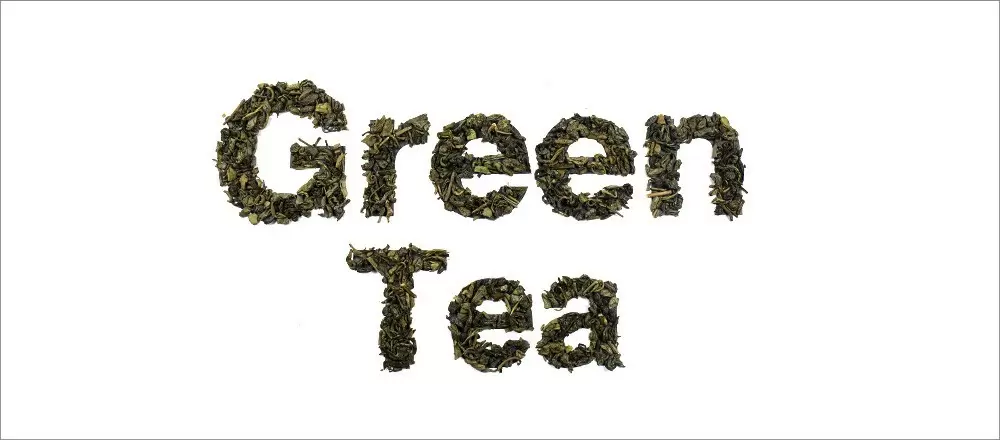
Types of Green Tea
Sencha Green Teas are, to many, the very definition of a true Green Tea. While Senchas from Japan are perhaps better known, those from China are often far superior in quality, our China Sencha Green Tea being no exception.
Grown on the northern side of the river Yangtze at altitudes of up to 800 feet. This makes for an excellent profile in Tea. Furthermore, our China Sencha Green Tea combines the three classic flavours while offering sweet undertones.
China and Japan are at odds when deciding which country first made Sencha Green Tea. There are legends of old on both sides of the argument; however, not one side can agree. Today, an estimated 78% of Tea consumption in Japan is Sencha. But this statistic does little to determine who first made the renowned beverage.
Regardless, we are most proud of our China Sencha Green Tea, mostly because of its unquestionable quality.
Matcha Tea
Conventional, Matcha Tea is not. It is far from it in fact, going above and beyond to be, quite simply, different.
Matcha Tea: Like all Teas, is made from the Camellia sinensis plant. Unlike other Teas, however, Matcha Tea is made by taking shade-grown Green Tea leaves and grounding them into a fine, green powder. In doing this, Matcha Tea produces larger quantities of amino acids and chlorophyll, components well-suited to the health conscious Tea drinker. It can also take on a more astringent quality when brewed, which is to the taste of many.
Our Matcha Green Tea Powder can be made with a Matcha Tea Whisk to quite literally whisk the clumps out while it is brewing. Attentiveness is required when making this fascinating beverage, but when done right, it’s worth it.
Gunpowder Green Tea
If the name isn’t intriguing enough, then the taste of Gunpowder Green Tea is guaranteed to grab and hold your attention long after you’ve drained your cup. The name is down to the leaves and young buds which have been rolled into small, round pellets. Some believe that the pellets themselves, which unfurl before your eyes when brewed, resemble lead shots used in muskets.
Others consider the possibility that the Mandarin Chinese phrase “freshly brewed”, when spoken in the correct dialect, sounds like the English word for “gunpowder”, and as a result got its name from a mere miscommunication. It is just another example of the elusiveness of Tea’s history.
Still, Gunpowder Tea today has become increasingly popular regardless of its unknown past. It seems, in fact, we think its best days are still to come.
Jasmine Tea
There is a beauty about Jasmine Green Tea, one that begins on the very day that the flower buds are first picked. From their fields, the buds travel to the nearby Tea Factory where they are stored until evening. And when evening finally arrives, thousands of jasmine blossoms open into the cool night air, releasing their signature scent.
It is then that the jasmine flowers are placed into basket trays and layered over the Green Tea leaves, the latter absorbing the intoxicating fragrance as well as the distinct flavour of the blossoms. It is a heavenly fusion of two of the most beguiling flavours on earth, one best experienced with our House Jasmine Green Tea. This Tea, called Jasmine Huang Shan Ya Tea, is brimming with delicate yet defined floral flavours coupled with smooth, sweet, grassy overtones.
Nothing beats a cup of Jasmine after a long day. It has a spiritual wholeness to it, somehow cleansing the mind while keeping the taste buds satisfied simultaneously. It is a favourite of many here, and will likely be a favourite of yours, too.
Peppermint Green Tea
Some of the world’s most popular Teas are flavoured. Peppermint Green Tea is up there with some of the more famous examples.
Peppermint Herbal Tea is undoubtedly the best known and perhaps most-loved Herbal Tea, so combining its flavours with those of Green Tea is a match made in heaven. It provides the Tea, particularly our own Peppermint Green Tea, with a complexity seldom found in other such flavoured brews. It also, as the name would suggest, adds a delicious minty edge to the beverage.
And better still, not only do the flavours of these two Teas combine, but also their health benefits. Peppermint contains an abundance of vitamins, minerals, and other antioxidants including Vitamins A, B, C, and E, Alpha-carotene, Beta-carotene, Calcium, Copper, Inositol, Iodine, Iron, Magnesium, Manganese, Niacin, Phosphorus, Potassium, Selenium, Silicon, Sulphur, and Zinc.
With the additional antioxidants in Green Tea, these compounds have the ability to combat free radicals in the body, the product of natural (though harmful) human oxidation. In doing so, Peppermint Green Tea can, among other things, support the immune system, improve digestion and maintain oral health. It is not the only Green Tea with the ability to potentially improve your everyday way of life but it is, perhaps, one of the best.
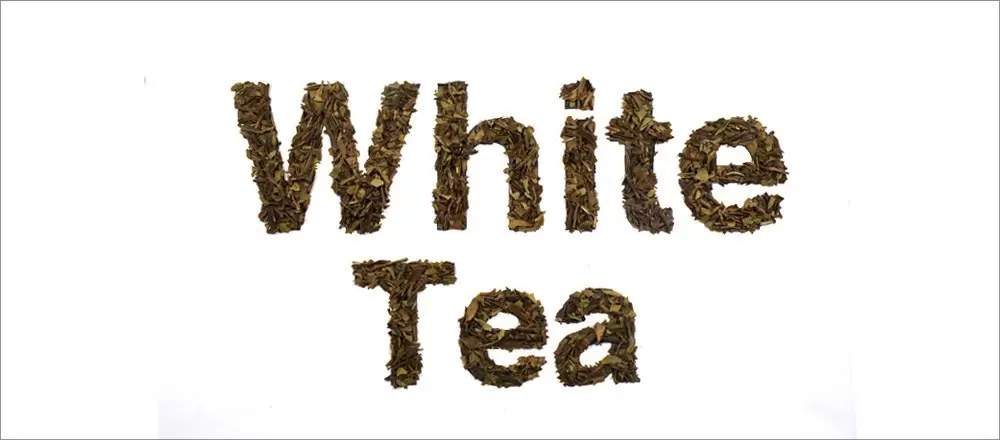
Types of White Tea
White Tea is the least processed Tea with the most health potential. Owing to its processing, or rather its lack of processing, White Tea retains the vast amount of its antioxidants. That is why its the Tea of choice for those looking to benefit their lives with their morning brew.
Once a rarity. But No longer. We have numerous delicate yet delicious White Teas and blends available on our online store. Anything from Pai Mu Tan White Tea to White Peony Tea; Bai Mu Dan Organic Tea to Snow Buds White Tea, or even Yunnan Special White Tea. These beverages in all their forms are becoming increasingly sought-after. And it is not just those who are health-conscious who seem to be discovering this Type of Tea, either. Many more are switching from Green Tea to White Tea because, simply, it tastes great.
Grown mostly in China, although other countries, particularly India, and especially the Indian state of Assam, have begun experimenting with its production. However, the most highly regarded White Teas originate from the Fuding, Zheng He, Songxi and Jiangyang prefectures and counties of the Fujian province of China. These hilly territories with their rich soils, year-round mild climates and abundant rainfalls contribute greatly to the unique character of White Tea.
The most common are Yinzhen (Silver Needle White Tea), Bai Mu Dan (White Peony Tea) and Shou Mei. Although White Teas do not work on a grading system, it is still helpful to think of grades when understanding the three main types of White Tea.
Silver Needle Tea, for example, could be considered the highest “grade” White Tea. Bai Mu Dan, meanwhile, is recognised as being a sort of middle-grade Tea. Finally, Shou Mei is the equivalent of a low-grade Tea. But we do not cater to low-grade equivalents. We deal only with quality.
Ying Zhen Silver Needle Top Grade
The name says it all: Ying Zhen Silver Needle Top Grade Tea is, understandably so, of top-grade quality. It is grown in the Fujian province of China, like most higher “grade” White Teas, and is not only considered a great White Tea, but also a great Tea. Full stop.
The leaves used in the making of Ying Zhen Silver Needle Top Grade Tea are picked on only a few days in early spring as the fresh buds begin to unfurl. The tea is not oxidised or rolled but simply withered and dried by a steaming process.
Its pre-brewed appearance resembles pine needles, whilst the taste is mellow with a slightly smoky aftertaste. White Teas don’t come much better than our very own Ying Zhen Silver Needle Top Grade Tea, a beverage to suit all palates at all times of the day.
Pai Mu Tan White Tea
Not only is Pai Mu Tan White Tea of the most brilliant quality, but it is also unique in that it comes from a particular type of Tea plant called Chaicha (or “Narcissus”), one that grows predominantly in the Fujian province of China.
Known as a White Peony Tea, just like a Bai Mu Dan Tea. Its large, long leaves appear green in colour, but it is unmistakably a “White Tea” when it comes to taste. And that same taste is like no other. Pai Mu Tan carries lightly on the palate, offering fresh, delicate grassy tastes with every sip. It is a popular choice made by Tea connoisseurs around the world.
White Peony Tea
Choosing our White Peony Tea is choosing to embrace a classic. It shares similarities with Pai Mu Tan as well as Bai Mu Dan, but likewise has a character (and, dare we say, a personality) of its own. It is a sweet infusion offering intense floral notes, among other qualities. And while many White Teas have been in existence for hundreds of years, White Peony Tea, or at least, in its modern form, has only really been around since 1922.
Decades later and its by far the most famous White Tea. It consists of unopened Tea buds as well as the two newest leaves to sprout from the Tea plant, and like other White Teas of similarly excellent quality, from the Fujian province.
Bai Mu Dan Organic White Tea
So what makes Bai Mu Dan Organic White Tea so special? The answer to that lies again in its name, particularly “organic”.
The term “organic” refers to the way agricultural products are grown and processed without the use of pesticides or insecticides, bioengineered genes and petroleum / sewage-based fertilisers. Organic Teas, which can be any type of Tea including White Tea, are certified by the regulatory body within the producing country and checked and certified again as they enter the European Union. So, in more ways than one, it is all natural, as well as being another example of a fine-quality Fujian-grown White Tea.
Yunnan Special White Tea
An unconventional Tea, grown in the Yunnan province of China instead of the Fujian province. To be more specific, this loose White Tea is grown in the southern area of Yunnan at altitudes between 1,300 and 2,000 metres. The large leaves are light green in colour with lots of silvery tips. When brewed, it offers a soft, mild taste with a delicate yet fruity bouquet.
Yunnan is most famous for its production of Black Tea, particularly Pu erh Tea, although White Tea is very much an “up-and-coming” beverage within the province. Soon, it may equal that of Fujian-grown White Tea; however, when it comes to our Yunnan Special White Tea, in particular, we believe it is already there.
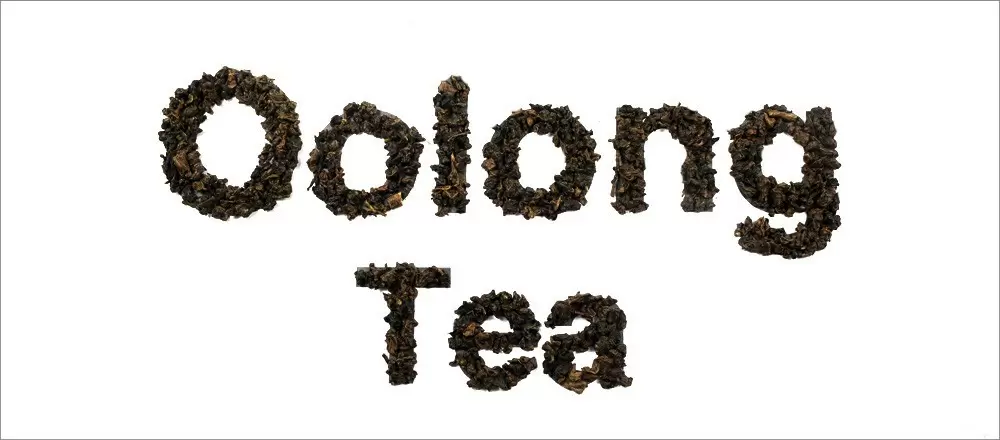
Types of Oolong Tea
Oolong Tea is not as fermented or oxidised as Black Tea, but is also more fermented and oxidised than Green Tea as well as White Tea. And yet, depending on the type of Oolong Tea, these brews, which presently account for less than 2% of worldwide Tea consumption, can (but not always) have qualities reminiscent of all Teas.
Combine the fresh fragrance of Green Tea with the indulgently malty flavours as well similar amounts of caffeine to Black Tea and what do you have? Most likely, Oolong Tea. Many originate from the Fujian province of China, although some are now being produced in Taiwan as well as the Darjeeling district of India, and even Vietnam! Some of the most famous varieties of Fujian-grown Oolong come from the Wuyi Mountains and the Anxi county, while Taiwan is known best for its Formosa Oolong Teas.
Given the nickname Chinese Restaurant Tea because it has long been regarded as an excellent digestive aid, helping the reduce inflammation in the gut and even, owing to its antiseptic qualities, being able to clear bad bacteria in the stomach. And that is why, in China, in particular, its offered in all good restaurants alongside large, fatty meals.
Seldom do Teas vary in flavour, in profile, in character more than Oolong Tea. Yes, some can be fragrant like Green Tea. And yes, some can be malty like Black Tea. But many can also be smoky or floral or even have notes of caramel or milk.
We have many different flavours with different profiles, and characters available to purchase from our online store.
Milk Oolong Tea
No, it’s not just a name, Milk Oolong Tea really tastes like milk, and we’re not talking about once additional milk has been added, either.
Made by the leaves heated briefly in milk water steam. It is a method that enables the Tea to have notes of milk and even, at times, caramel. So, it comes with little surprise to many that Milk Oolong Tea is a big “must” for those who have a particularly refined sweet tooth, as well as being a great choice for those looking to cut down on their sugar intake without sacrificing on indulgence. Nutritional too despite its dessert-like taste, it has the same health-promoting properties of any Oolong Tea.
GABA Oolong Tea
They don’t come much more different than this. The “GABA” in GABA Oolong Tea stands for “Gamma-Aminobutyric Acid”, which is the result of the unique manufacturing process this Oolong Tea goes through.
The concept refers to the oxidation of Tea, whereby a high-nitrogen, oxygen-free environment is used instead of oxygen during oxidation. High levels of GABA are extremely beneficial to the human nervous system, according to countless modern scientific studies.
Gamma-Aminobutyric Acid, as well as the Oolong Tea leaf itself, can also boost the metabolism, helping the body to burn fat quicker and more efficiently. Furthermore, GABA Oolong Tea has a deep, rich flavour with fruity undertones. So, it not only benefits one’s health, but also their taste buds.
Jade Oolong Tea
Step into a world of Taiwanese Teas, beginning with Jade Oolong Tea. Taiwan, formerly called Formosa, is world-famous for its Oolong Teas. Grown in the Nantou district of Taiwan and uses only the best spring pickings of the season. It is noted as being a fresh, smooth infusion with fruity undertones and is a brilliant palate cleanser.
The name has connotations of exquisite beauty. It suggests a distinct, mesmerising quality, which is exactly what Jade Oolong Tea offers once brewed. In fact, what it delivers in appearance, in taste, and in health benefits.
Se Chung Oolong Tea
A personal favourite of many here, translated, means “colourful variety”. Se Chung Oolong Tea originates from the Anxi county of the Fujian province, China. It is created using a shorter fermentation period compared with other Oolong Teas, making it more reminiscent of Green Tea in terms of flavour, which is described as herbaceous and grassy.
This beverage is particularly popular in Hong Kong. But that same popularity is spreading elsewhere, including further West.
Oolong Formosa Tea
Once more venturing to Taiwan, our Oolong Formosa Tea is by far the best-selling Oolong Tea we currently stock. After plucking, Oolong Formosa Tea is fermented to approximately 50% and then wilted in the sun. Following this, the leaves are turned in bamboo baskets during the drying process, by which point the Tea develops a mild aroma while taking on a curled appearance.
Taiwan has only been producing different types of Oolong Teas since the 19th Century. And yet today, examples such as Oolong Formosa Tea prove that age isn’t everything when it comes to everyone’s favourite morning brew. It is no real wonder, then, that its now our House Oolong Tea.
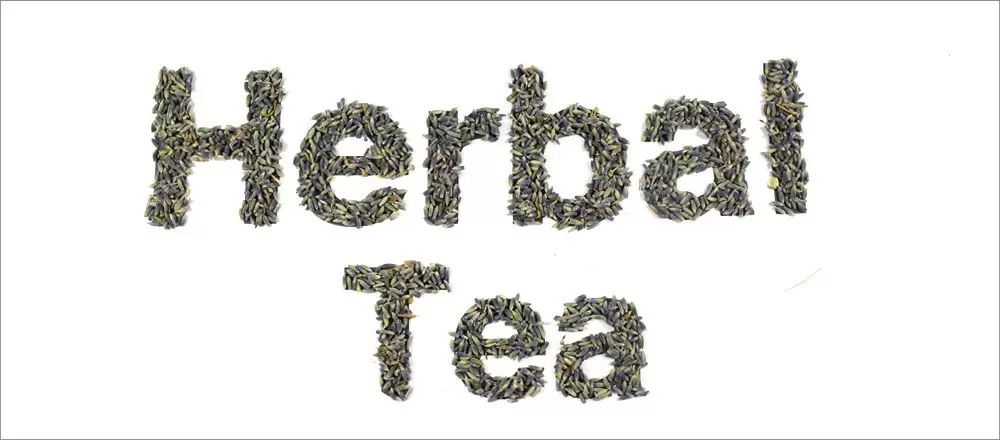
Types of Herbal Tea
Herbal Teas pre-date regular Tea. They have been consumed for many thousands of years, in various forms, and continue to be just as popular today as they were back then. But the term “Herbal Tea” is extremely broad. By rights, anything that is not from the Camellia sinensis plant, and almost anything that is not fruit-based, is classified as a Herbal Tea. That means Peppermint Tea, Camomile Tea, Hibiscus Tea, Ginger Tea and Lemongrass Tea. That also means Turmeric Tea, Dandelion Root Tea, Pine Needles Tea, Sage Tea and Liquorice Tea.
The vast majority of these Teas are naturally caffeine-free, although there are exceptions to this rule, such as Yerba Mate, a beverage made from one of 60 plants (including the tea plant) to contain caffeine. However, providing one does their research, most are a great alternative to the likes of Black Tea and Oolong Tea for those looking to cut down their caffeine intake.
Furthermore, most have potential health benefits associated with their frequent consumption. Depending on the ailment you have, there might just be a Herbal Tea that could alleviate symptoms, or in some cases, eradicate them.
It is predicted that one day, they could be just as popular as other types of tea. Who knows what the future might bring? But with a nice, hot, nourishing cup by your side, the possibilities are seemingly endless.
Peppermint Tea
What do you think of when you hear the words “Herbal Tea”? The chances are its Peppermint Tea, and that’s because it is by far the most famous and arguably the tastiest Herbal Tea in existence. For many, it defines the very meaning of Herbal Tea.
Made using leaves from Mentha piperita, an aromatic, rhizomatous, perennial plant that can grow to heights of up to 90 centimetres. It belongs to the Lamiaceae family and is, in fact, a natural hybrid of watermint (Mentha aquatica) and spearmint (Mentha spicata).
Originally native to Europe and the middle-east, peppermint can now be found growing across the world. A remarkably large quantity of household and commercial products contain peppermint, including toothpaste, mouthwash, chewing gum, mints and sweets, ice cream, alcoholic liqueurs, digestive aids and supplements, and essential oils. None are quite as special, however, as the peppermint found in Peppermint Tea.
Camomile Tea
Nicknamed “the calming herb” (and for a very good reason, too), Camomile Tea can promote relaxation and improve sleeping patterns. It is the Herbal Tea of choice just before going to bed, although with its deliciously floral flavours and enticing aromas, it is no real surprise to hear that many people choose to drink it throughout the day.
Camomile has been highly regarded as a “wonder”-herb since the days of Ancient Egypt, where it was long associated with their God of Sun, Re (Ra). It was also used in a number of skin-care products, which is not too dissimilar to its use today. In fact, another potential benefit of Camomile Tea is improved skin health with the frequently consumption.
Our Camomile Flower Tea also comes from Egypt, and is, in our opinion, worthy of the same recognition it received thousands of years ago (albeit adapted to modern times!). It is a notably sweet infusion, one capable of evoking childhood memories of strolling through summery meadows.
Hibiscus Tea
For those suffering from high blood pressure, Hibiscus Tea is a great choice. The studies are out there, the findings are promising; however, Hibiscus Tea offers a lot more, too. There are many varieties of the this plant, but the one used in the making of this Tea is Hibiscus sabdariffa which, upon brewing, offers a taste reminiscent of pomegranate or cranberry. It is often described as tart, or sometimes sour in flavour.
Also added to many Fruit Tisanes, also, as its deep red colour tends to dominate the overall colour of brewed Fruit Tea. So, if your Fruit Tea is red, the chances are it contains hibiscus! But as a standalone beverage, Hibiscus Tea is dominant still. It is dominant in the sense that its flavour is strong, full-bodied and irresistible.
Turmeric Tea
It is called “the spice of life”, mostly because it promotes a healthy living. Turmeric Tea is fast becoming a new phenomenon. Used in countless culinary dishes, particularly in India, this spice has been subjected to extensive and rigorous scientific examination, the results of which suggest that Turmeric Tea, when consumed as part of a healthy and active lifestyle, can reduce inflammation, improve the immune system, help with digestion, and even enhance cognitive function.
The reason for its potential is owing to one particular component, curcumin, which is a yellow pigment and also an astoundingly beneficial polyphenolic antioxidant. This antioxidant is capable of combating free radicals in the body, a handy tool in the fight for a healthier “you”. Turmeric is a common ingredient in Chai Teas, but when enjoyed as a standalone beverage, it offers a unique tangy taste with spicy undertones.
Greek Mountain Tea
Growing in great abundance throughout Greece, Crete, and other Mediterranean regions and countries, the Sideritis Syriaca plant, as well as other members of the Sideritis family, is used in the making of Greek Mountain Tea.
In the Greek language, Greek Mountain Tea is often called “Malotira”, while other names include “Ironwort”, “Mountain Tea”, and “Shepherd’s Tea”. Translated, “Sideritis” (as in the name of the plant itself) means “he who is made of or has iron”, which is in reference to its alleged ability to heal wounds created by iron weapons (hence the name “Ironwort”, in particular).
But more importantly, upon brewing, this Tea offers wonderfully herbaceous flavours, of which are unparalleled. It also boasts a bold, fresh taste with a smooth, almost minty aftertaste. And who wouldn’t want that in their morning cup of Tea? Or even the evening.
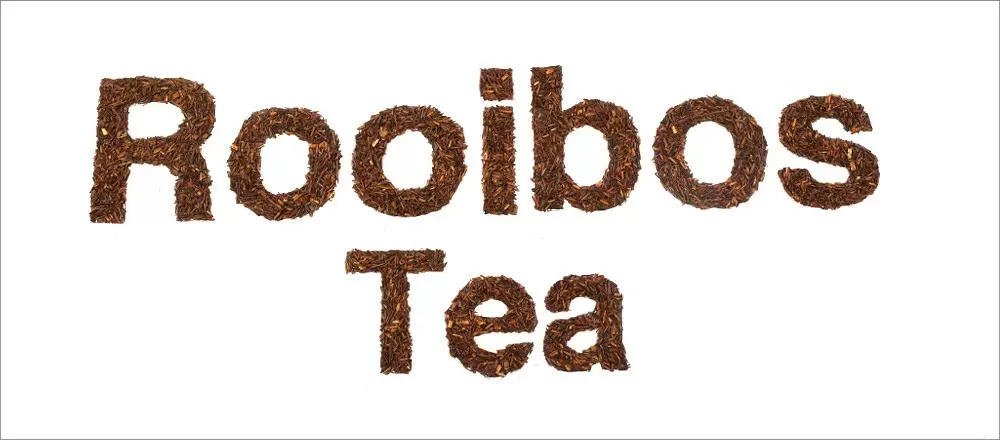
Rooibos Tea Types
Rooibos Tea is another example of a Herbal Tea, except it has taken on a new life in recent years, one that justifies further explanation as Rooibos Tea can come in many shapes and sizes, as well as countless flavours.
Pronounced “roy-boss” and also known as “Redbush Tea”, “Bush Tea” and “Red Tea”, Rooibos is grown exclusively in the Cederberg region of South Africa, located on the western cape of the country.
It comes from the perennial Aspalathus linearis plant, a member of the Fabaceae (sometimes called the Legume) family, and can reach heights of up to 3 feet (0.9 metres). The leaves are very thin and needle-like and have been grown, harvested, and brewed for thousands of years.
Rooibos is subjected to some of the harshest conditions of the African continent, making it a particularly hardy plant. Wintertime temperatures in the Cederberg region can dip well below zero while in the summer, it is not uncommon to have temperatures above 40°C.
The Aspalathus linearis plant is harvested during the hottest time of the year. Sickles are used to cut down the long, green branches, the cuttings of which are placed into hessian bags and transported on foot to the factory. From there, the Rooibos leaves are typically oxidised, similar to Black and Oolong Tea. The oxidation process changes the colour of the leaves from green to red; however, if the leaves are not fermented, then they can still be brewed as Green Rooibos Tea.
Fully fermented Rooibos Tea has notes of nuts, honey, and caramel with strong herbaceous overtones. Green Rooibos Tea, on the other hand, is recognised for its mellowness with slightly sweet undertones. Whether you choose Red or Green Rooibos Tea, you’re certainly in for a treat!
And moreover, there are many ingredients that can be added to Rooibos Tea to enhance its flavour. Here at The Kent and Sussex Tea and Coffee Company, we stock many.
<h3 >Rooibos Tea
This is our House Rooibos Tea. It can be bought as a Loose Leaf Tea or in Tea Bags. That choice is yours, and whatever decision you make, you’re getting the same wonderful flavour, the same wonderful character, and the same wonderful Tea that is our House Rooibos Tea.
Before venturing into the world of flavoured Rooibos Teas, this beverage is a fantastic starting point, particularly for the “traditionalist” in you. It is another outstanding example of how, in the world of Tea, simple doesn’t have to be boring.
In fact, there is no such thing as “boring” when it comes to any Rooibos Tea. Our House Rooibos Tea is unique in every sense, bringing to light everything so fondly loved with these brilliant brews.
Rooibos Green Tea
If, as a rule of thumb, you prefer normal Green Tea over Black Tea, then perhaps our Rooibos Green Tea is also the way to go.
But unlike your (formerly?) favourite “regular” Green Tea, Rooibos Green Tea is caffeine free and remarkably low in tannins. Could that mean that, by rights, Rooibos Green Tea is better than normal Green Tea? We’ll let you be the judge. When put against fully-fermented “Red” Rooibos Tea, Rooibos Green Tea is considered less bitter in taste. It is fresh and smooth with every sip, while also consisting of slightly earthy undertones.
Orange and Eucalyptus Rooibos Tea
South Africa meets Australia in a cup! That is the best way to describe our Orange and Eucalyptus Rooibos Tea. It is just one of the hundreds if not thousands of different flavoured Rooibos blends. One, however, creates a powerful menthol aroma with fruity notes of peach and orange.
Known to suits a variety of flavours, as established clearly with our Orange and Eucalyptus Rooibos Tea. It is a very versatile plant (in more than one way) and, if we do say so ourselves, is a very delicious plant, too.
Granny’s Garden Strawberry Rooibos Tea
Another fine example of a flavoured Rooibos Tea is Granny’s Garden Strawberry Rooibos Tea, a wholesome, family-orientated brew that evokes charming memories of sitting out on your grandma’s lawn while gorging on an indulgent bowl of strawberries and cream. Who wouldn’t want to relive that?
But before you have your first sip, take a moment to enjoy the wonderful aroma of this beverage as it wafts from your cup. Savour the strong flavours of berries and delicate floral notes, before experiencing its sweet, irresistible aftertaste.
Granny’s Garden Strawberry Rooibos Tea likewise honours a woman considered the “grandmother” of Rooibos Tea, Annique Theron. In the 1960’s, Annique discovered that mixing Rooibos Tea with breast milk could alleviate allergy symptoms in her then 14-month-old child. Now we know that all Rooibos Teas, including Granny’s Garden Strawberry Rooibos Tea, can alleviate these very same symptoms in not just all 14-month-old children, but in everyone!
Rooibos Christmas Tea
Get into the festive spirit with Rooibos Christmas Tea, one of many Christmas-themed Teas we supply here at The Kent and Sussex Tea and Coffee Company.
But this one is different. This one is special. Rooibos Christmas Tea contains many “Christmassy” ingredients such as cinnamon, clove buds, cardamom seeds and ginger. But moreover, because of the inclusion of Rooibos leaves, this beverage may also help you to lose weight, perhaps at a time when you need it to most!
All Rooibos Teas have metabolism-boosting properties, which is yet another comparison to be made to regular Tea. That means that, with Rooibos Christmas Tea by your side, it may be easier to burn off that turkey dinner come boxing day!
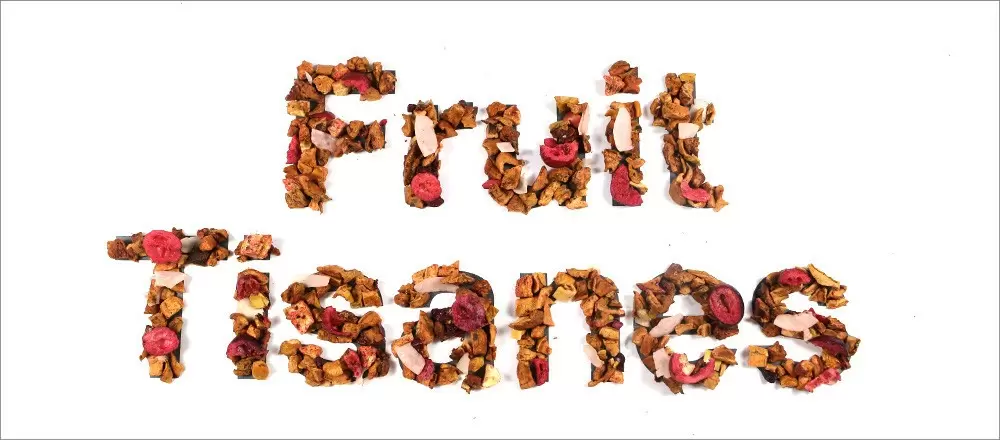
Types of Fruit Teas and Tisanes
Fruit Teas are for the fun-lovers. They may not have the same health-promoting potential as other brews; however, they instead offer intense bursts of flavour, anything from citrusy orange to zesty lemons to ripe berries to, well, just about anything relating to fruit!
And it is worth noting that Fruit Teas, like most Herbal Teas, have one main advantage over the likes of Green Teas, Black Teas, Oolong Teas, and White Teas: they, too, are caffeine-free. Again, like Herbal Teas, Fruit Tisane Teas are a great choice for those looking to cut down their caffeine intake. Consider enjoying a cup of Fruit Tea if you’re sensitive to caffeine, if you’re pregnant, or if you’re simply looking to live free of the energising substance. Yes, there are many reasons why people choose Fruit Tea.
Another reason is variety. Fruit Tisanes can be made from dried fruits, fruit peel, fruit oils, blossoms, and spices. They can be made from a combination of a few of these ingredients, or a combination of the lot. Fruit Teas can also be blended with Herbal Teas. Basically, Tisanes can be nearly anything so long as they do not contain leaves from the Camellia sinensis plant.
We have an incredible selection of Fruit Teas available. Red Berry Fruit Tisane, Pina Colada Fruit Tisane, Jamaican Rum Fruit Tisane, Mango and Friends Tea, and Cloud Catcher Tea are just some of the Teas we stock from which you can choose. Or, choose another one.
Red Berry Fruit Tisane
Would it surprise you to hear that Red Berry Fruit Tisane is bursting with flavours of berry with every sip? Probably not. Nevertheless, it is a taste worth experiencing, a taste that will never cease to impress.
Red Berry Fruit Tisane is a perfect example of a blend that looks just as visually striking in the packet as it does in your cup. But nothing beats its distinct flavour, described as rich and unmistakably (and unsurprisingly) fruity.
This beverage makes for an excellent Iced Tea in the summer or a nice hot brew in the middle of the winter. But then again, it is a superb choice regardless of the season, regardless of the time of year, and regardless of the time of day!
Pina Colada Fruit Tisane
Yes, we all know the song. But you don’t have to be on a beautiful sun-kissed beach to enjoy Pina Colada Fruit Tisane. You don’t even have to get off the sofa apart from when you put the kettle on and brew up!
Pina Colada Fruit Tisane showcases perfectly the versatility of the world of Fruit Teas. It takes on the flavour of your favourite cocktail, except with this Tea, you do not have to worry about the aching hangover in the morning. And like Red Berry Fruit Tisane, Pina Colada Fruit Tisane can be made into a scrumptious Iced Tea. So scrumptious, in fact, that you might, for a fleeting moment, wonder why you ever dreamed of that beautiful sun-kissed beach in the first place. There is the possibility of finding your own paradise with Pina Colada Fruit Tisane.
Jamaican Rum Fruit Tisane
If Pina Colada isn’t your cocktail of choice, then why not instead have our Jamaican Rum Fruit Tisane? Embrace the spirit of the Caribbean, every day, from the comfort of your own home with this astoundingly aromatic and flavoursome Fruit Tea.
Its ingredients include raspberries, freeze-dried strawberry pieces, hibiscus blossoms, blackberries, blackcurrants, elderberries, rosehip peel, and all-natural flavouring. Combined, they make something special. Combined, they make Jamaican Rum Fruit Tisane. And with the inclusion of hibiscus blossoms, in particular, there is also a chance of lowering blood pressure, albeit only slightly, with the frequent consumption of Jamaican Rum Fruit Tisane. Not many Fruit Tisanes have health benefits – Jamaican Rum Fruit Tisane is an exception to the rule.
Mango and Friends Tea
Be more exotic with Mango and Friends Tea, a fruit tisane that offers a sweet and fresh taste sensation from start to finish. With ingredients such as pineapple, orange, safflowers, marigold blossoms and, of course, mango, this beverage is as fulfilling as it is varied. Mango and Friends Tea is named not just because of its wide array of ingredients, however. We believe, as the name might suggest, that it is great for gatherings of friends and families, is great for parties and events, and is great for building completely new relationships with once-strangers.
That is the power of Tea, the power of Fruit Teas, in particular: they bring people together. Because there is always something to agree on when a nice, hot (and fruity?) brew is involved!
Cloud Catcher Tea
Fruit Teas do not always have to be saved for those sunny days outside. They can be enjoyed when rain is imminent, and the clouds cover the sky. Cloud Catcher Tea is well-suited to those days stuck indoors, capable of bringing joy even when the weather is not on your side.
This acid-free tisane is a real assortment of fruity pieces, including freeze-dried kiwi, sour cherry pieces, tropical coconut flakes, and juicy cranberry slices. It is perfectly balanced in every sense. But perhaps more importantly, it proves that a Fruit Tisane doesn’t always have to be a seasonal delight, just like Red Berry Fruit Tisane, just like many of our other Fruit Teas.
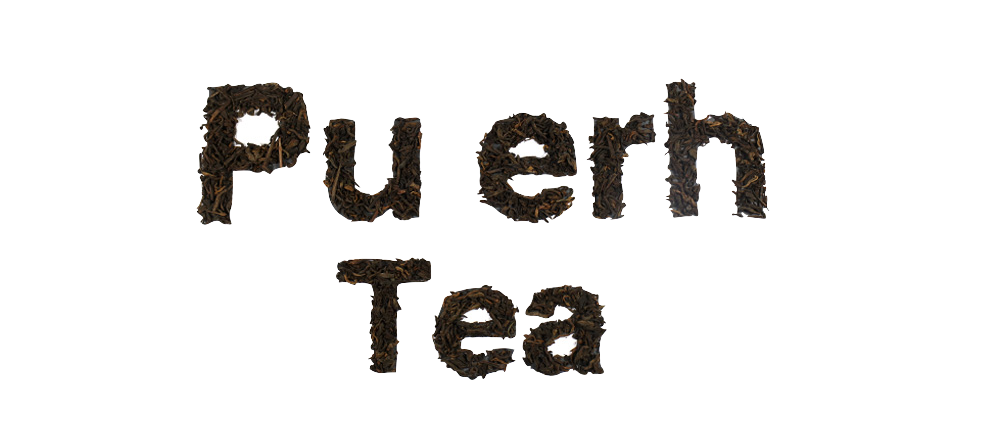
Types of Pu erh Tea
Pu erh Tea is another example of a Black Tea. However, there is a significant difference between Pu erh Tea and, say, Ceylon Black Tea, or Assam Black Tea. Like a fine wine, Puerh Tea gets better with age.
It famously comes from the Yunnan province of China, often in the shape of so-called “Tea Cakes” (although we also cater to loose leaf Pu erh Tea). These Tea Cakes are, in themselves, technically loose leaf Puerh Teas just compressed into a “cake” shape. But what does this achieve?
When the leaves are compressed, it enables them to mellow while enhancing in flavour over time. Hence why some Pu erh Teas, which are the most oxidised form of any Tea let alone Black Tea, are quite valuable. Just like a quality bottle of wine. But worry not as The Kent and Sussex Tea and Coffee Company have many reasonably-priced, as well as quality assured Pu erh Teas available, including our House Puerh Black Tea, our Pu erh Special 3 Year Old Vintage Tea and, of course, our Puerh Tea Cakes.
All Puerh Teas must be grown, harvested and processed in the Yunnan province, which enables the “brand” to be authenticated. Of course, we stock nothing but the very best Yunnan-grown Puerh Tea despite there being many false Puerh Teas from different Chinese provinces flooding the market. Is Pu-erh Tea your cup of Tea? Consider the following Teas:
Pu erh Tea
Unsure where to start when it comes to Pu erh Tea? We suggest starting right here with our House Puerh Tea. This traditional Pu erh Tea has a mellow flavour with a sweet aftertaste. It is everything one expects from a Pu erh Tea, with the added assurance of quality.
Our House Puerh Tea, and other Pu-erh Teas like it, can also lower “bad” LDL Cholesterol, according to a Chinese study conducted at the Kunming Medical College. Furthermore, another study conducted at the United States Institute of Biochemistry and Molecular Biology discovered that Puerh Tea is effective in reducing body weight owing to the prevalence of catechins.
Pu erh Special 3 Year Old Vintage Tea
The name almost certainly says it all, but just in case: our Pu erh Special 3 Year Old Vintage Tea is, well, a 3-year-old “vintage” Tea. Not only is this aged Tea high-grown in the Yunnan province, but also hand-crafted. In cup, the colour is a deep burgundy with the traditional earthy taste notes you’d expect from a Puerh Tea of this calibre. Nothing beats it.
Pu erh Tea Cake
They may appear unassuming, but these Puerh Tea Cakes pack a punch in terms of extraordinary flavour! One cake (5 grams) is enough to make a large (and hearty!) Pot of Tea. Each one has been individually wrapped, and each one is as tasty as the last.
Most of our Puerh Teas are loose leaf (in the most literal sense), but as the name suggests, our Puerh Tea Cakes are compressed Teas, highlighting the art and tradition of Puerh Tea at its finest.
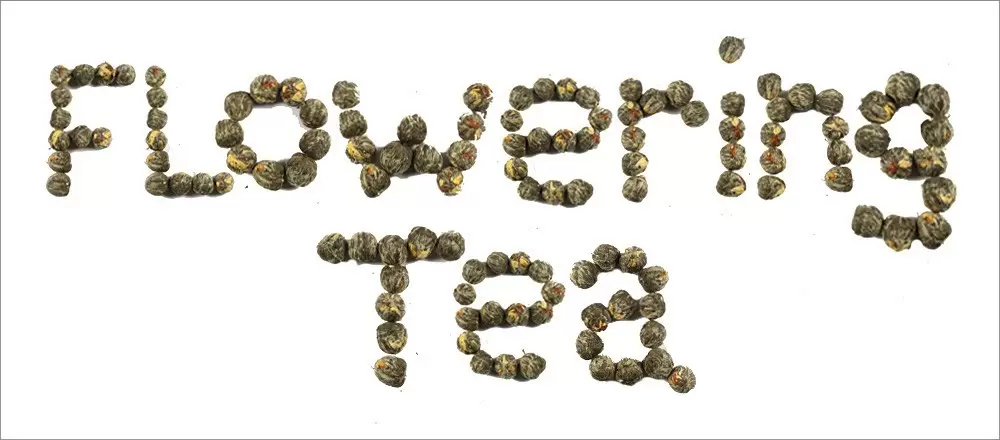
Types of Flowering Tea
There is nothing quite like a Flowering Tea, the name alone suggesting peace and serenity. And when brewed to perfection, these Teas can offer exactly that. Flowering Teas, also called “Treasure Teas”, are carefully handmade Teas that consist of dried flowers inside a layer of hand-sewn Green and/or White Chinese Tea. When placed in hot water, Flowering Teas unfurl before one’s eyes, a spectacle found with no other Tea type.
Flowering Teas originated in the Fujian province of China, although they are now made in other Chinese provinces, too. The flowers used in their making can range from lilies to chrysanthemums to jasmine flowers. Other flowers have also been used in the past and continue to be used presently; however, these three particular flowers (i.e lilies, chrysanthemums, jasmine flowers) are the best-suited to the making of the Tea. A single experienced Tea-producer can make up to 400 Flowering “buds” a day.
We are proud of the few Flowering Teas we stock. Each one is best brewed in a glass Teapot, mostly because, that way, the soon-to-be-drinker can marvel at its brewing!
Jasmine Lily Tea Flower
Be inspired by our Jasmine Lily Tea Flower, a Tea that not is not only visually striking but also offers astonishingly beautiful scents. Jasmine flowers most commonly open at night, but when blended with the finest quality tea leaves, these stunning blossoms open whenever added to hot water. Ultimately, Jasmine Lily Tea Flower is like a night at the opera: it is a performance, one that burns slowly, but enchants constantly.
Red Flower Burst Tea Flower
Quite literally bursting with awe (as well as flavour, naturally), our Red Flower Burst Tea Flower lives up to its name. And so much more. This particular Flowering Tea is made with chrysanthemum, which upon brewing, offers trace elements of Vitamins A, B and C, calcium, choline, folic acid, magnesium, niacin, potassium and riboflavin, to name a few.
Combined with its addition of Green Tea leaves, Red Flower Burst Tea Flower is another example of a Flowing Tea capable of improving one’s everyday life.
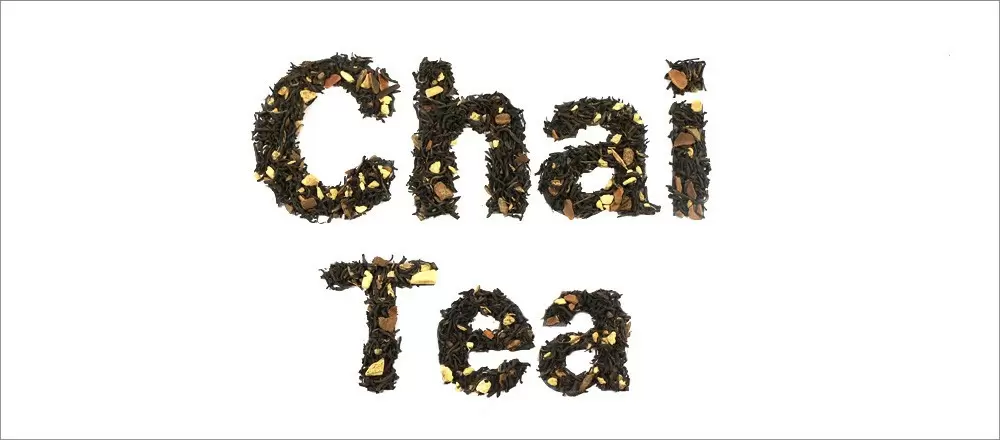
Types of Chai Tea
Chai Teas are usually Black Teas. They have been in existence for centuries (and before that, there were Herbal Teas very similar to Chai Teas in existence for thousands of years), yet in the West, their popularity has only boomed since the 1990’s.
Today, however, Chai Teas are some of the most popular Black Teas around. In fact, they have surpassed the likes of many other famous Flavoured Teas (we’ll let you guess which ones) in terms of popularity, and are now some of our best-selling Teas we stock!
Chai Tea originates from the Indian subcontinent. And even now, if you’re lucky enough to visit India, you will undoubtedly notice that Chai Teas differ from region to region, village to village, and even household to household. Along with the Tea leaves, Chai Tea consists of a blend of herbs and spices found predominantly in India. Often you will find cardamom, cinnamon, cloves, ginger root, peppercorn, and star anise in a typical Chai Tea. Other ingredients sometimes added include fennel and turmeric.
There are hundreds of different types of Chai Tea with hundreds of different combinations of ingredients. We cater to many, but admittedly not all. That would be impossible as some Chai Teas are long-loved (and secret!) family recipes dating back generations! But the Chai Teas we have (and we do have many!) we are proud of. In fact, we have a few family recipes of our own!
Bombay Chai Tea
We have won awards for this particular Chai Tea, its most notable accolade being the Gold at the Great Taste Awards 2006. It was first the family recipe of the grandmother of a very old acquaintance to our owner, Richard Smith, which was then passed on to us. Since reaching our nurturing hands, our Bombay Chai Tea has become the best of the best in terms of its popularity. With its bold notes of clove coupled with its sweet-almost-fruity undertones, it is no real surprise why.
Spicy Turmeric Chai Tea
There are “hearty” cups of Teas, and then there is this one, a beverage packing a spicy (but not too spicy) punch with every sip. Spicy Turmeric Chai Tea will never disappoint when it comes down to the flavour. This bold, enticing brew contains chilli, cardamom seeds and turmeric slices, among other ingredients. Combined, these ingredients when brewed live up to the name of this beverage.
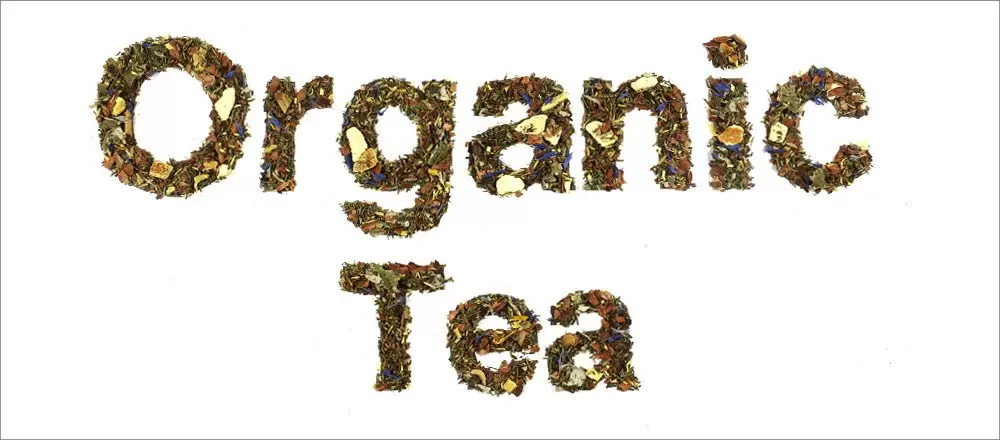
Types of Organic Tea
Looking to do “your bit” for mother nature? Do you find yourself becoming increasingly aware of your presence on this earth and wish to do something about it? Start with Organic Tea. The term “organic”, when applied to Tea, refers to the way agricultural products are grown and processed without the use of pesticides or insecticides, bioengineered genes and petroleum / sewage-based fertilisers.
Organic Teas, which can be any type of Tea or Tisane, are certified by the regulatory body within the producing country and checked and certified again as they enter the European Union.
The EU regulations on organic products are very robust and uniform across Europe. Each container of Tea is checked and sampled, and if a Tea fails inspection the container is resealed and returned to the country of origin. That means that nothing but certified Organic Teas reach The Kent and Sussex Tea and Coffee Company. No exceptions.
Better still, not using synthetic fertilisers can help protect the environmental state of the land surrounding Tea estates and promote biodiversity in and around Tea gardens. This includes helping to protect local wildlife and allowing for a sustainable and progressive future in Tea growing.
Already, the heavy use of pesticides and fertilisers is depleting land that should be arable for a much longer period of time. Furthermore, traces of nitrogen contained in these man-made products are often absorbed into the surrounding soil as well as the Tea plants themselves. The remaining residue can run into waterways where it creates massive algal blooms, which is overgrown, nitrate-fed alga capable of starving the bodies of water of vital oxygen while also suffocating fish and other aquatic life.
Organic Magic Tea
Sustainable methods are used in the making of Organic Magic Tea, a Herbal Tea made from Rooibos, cocoa peel, orange peel, coconut chips, liquorice root, raspberry leaves, peppermint leaves, blue cornflower blossoms, and marigold blossoms. Yet, despite its name, our Organic Magic Tea is grounded in reality when it comes to reducing the harmful effects of non-sustainable commercial Tea production. It offers peace of mind as well as some truly wonderful tastes when brewed.
Organic Yerba Mate Matcha Tea
Here, with our Organic Yerba Mate Matcha Tea, you have three incredible qualities rolled into one. First, you have the fact that it is organic; second, it is a Yerba Mate, a rare example of a caffeinated Herbal Tea; and third, it is a Matcha. The antioxidant potential of Organic Yerba Mate Matcha Tea is almost unparalleled, making it by far one of the healthiest Teas we stock. But benefits aside, it’s favoured for its toasty, nutty and smokey notes.
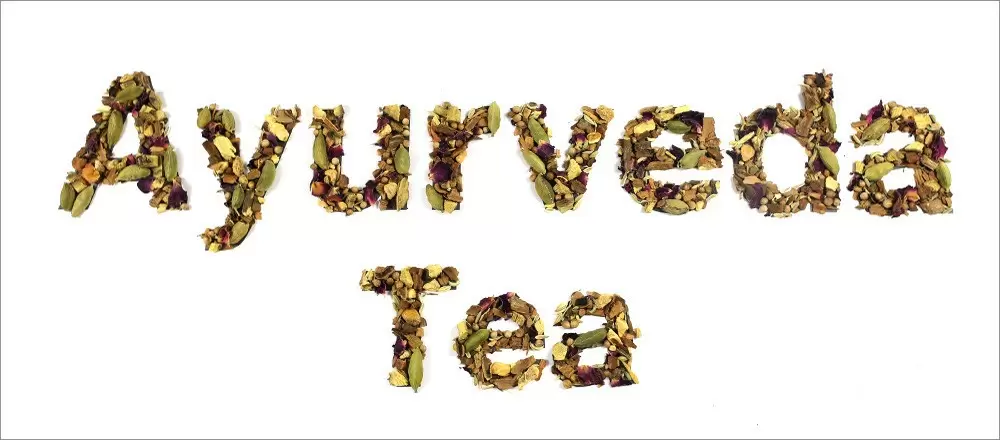
Types of Ayurveda Tea
An Ayurveda Tea belongs to an ancient belief system of holistic healing, named Ayurveda or Indian Ayurvedic Medicine. It has been practised in India for thousands of years and is still practised today, now around the world. The term “Ayurveda” means “life” (“ayur”) and “knowledge” (“veda”) and is applied to one’s life by following two main principles.
These main principles are first, to understand that the mind and body are inextricably connected, and second, that the mind has the most powerful capacity to heal and transform the body.
Ultimately, the concept of preventing disease before its manifestation in Ayurvedic Medicine depends on expanding one’s own awareness. This is followed by bringing the mind into a state of balance and then extending that balance to the body. It makes sense, but where does Tea come in?
Food and lifestyle routines are considered an integral part of Ayurveda. A variety of herbs and spices are often used to balance one’s “doshas”, the energies that make up every individual and work together to perform different physiological functions in the body.
There are three Doshas in the body: the “Vata” dosha, the “Pitta” dosha and the “Kapha” dosha. The Vata dosha is the energy that controls bodily functions and motion, including blood circulation, breathing, blinking and the heartbeat. The Pitta dosha is the energy that controls the body’s metabolic systems, including digestion, absorption, nutrition and the body’s temperature.
Finally, the Kapha dosha is the energy that controls growth in the body. It also supplies water to all the body parts, moisturises the skin and maintains the immune system.
Tea is a dosha-balancing tool according to Ayurvedic Medicine. These Teas are often Herbal Teas and are further subcategorised, with there being “Stimulating” Teas, “Balancing” Teas and “Anti-strain” Ayurveda Teas. Each type of Tea is promoted in accordance with the three doshas. Stimulating Teas are often used to support the Kapha dosha, Balancing Teas for the Pitta dosha and Anti-Strain Teas for the Vata dosha. If you are choosing to live your life spiritually, then our Ayurveda Teas are for you.
Ayurveda Anti-Strain Tea VATA
To balance one’s Vata dosha, our Ayurveda Anti-Strain Tea VATA contains cinnamon, liquorice root, ginger, fennel, orange peel and cardamon, all ingredients well-suited to improving bodily functions and motion according to Ayurvedic Medicine. And, of course, it wouldn’t be us if our Ayurveda Anti-Strain Tea VATA didn’t taste great, too. Not only do these ingredients create harmony in the body, but also on the palate. This Herbal Tea offers a slightly spicy kick with fruity undertones.
Ayurveda Balance Tea PITTA
It will come as no surprise that this Tea is used to balance one’s Pitta dosha. And it does a great job at it, too. Furthermore, Ayurveda Balance Tea PITTA is, according to ancient teachings, capable of calming and relaxing the body, mind and spirit. To achieve balance with this Tea, ingredients included are cinnamon, cardamon, liquorice root, coriander, fennel, ginger root and rose petals. It is a notably sweet Tea with a soft, flowery scent and an equally soft, flowery flavour.
Ayurveda Stimulating Tea KAPHA
The strongest of all our Ayurveda Teas, Ayurveda Stimulating Tea KAPHA is designed to boost and energise the immune system. But putting spirituality aside, the ingredients of this Tea, particularly turmeric root, can also support immune system health on a scientific level.
Turmeric can reduce viral replication by approximately 90% (yes, 90%!) in laboratory cells infected with influenza (flu) varieties, according to a study published in a 2009 edition of “Emerging Infectious Diseases”. Other ingredients in Ayurveda Stimulating Tea KAPHA support this benefit, including ginger root, cardamom, coriander, cloves and nutmeg.

 Loose Leaf Tea
Loose Leaf Tea Pyramids
Pyramids Tea Bags
Tea Bags Africa
Africa Assam
Assam Ceylon
Ceylon Chinese
Chinese Darjeeling
Darjeeling European
European Indian
Indian Japan
Japan Nepal
Nepal South East Asia
South East Asia Ayurveda Tea
Ayurveda Tea Black Tea
Black Tea Chai Tea
Chai Tea Flowering Tea
Flowering Tea Fruit Tisanes
Fruit Tisanes Green Tea
Green Tea Herbal Tea
Herbal Tea Matcha Tea
Matcha Tea Oolong Tea
Oolong Tea Organic Tea
Organic Tea Pu erh Tea
Pu erh Tea Rooibos Tea
Rooibos Tea White Tea
White Tea Asian Coffee
Asian Coffee Caribbean Coffee
Caribbean Coffee Central American Coffee
Central American Coffee South American Coffee
South American Coffee Coffee Blends
Coffee Blends Decaffeinated Coffee
Decaffeinated Coffee Espresso Coffee
Espresso Coffee Ethically Sourced Coffee
Ethically Sourced Coffee Flavoured Coffee
Flavoured Coffee Organic Coffee
Organic Coffee Single Origin Coffee
Single Origin Coffee Chocolate 1
Chocolate 1 Chocolate 2
Chocolate 2 Chocolate 3
Chocolate 3 Chocolate 4
Chocolate 4 Chocolate 5
Chocolate 5 Chocolate 6
Chocolate 6 Chocolate 7
Chocolate 7 Chocolate 8
Chocolate 8 Chocolate 9
Chocolate 9 Loose Tea Filters
Loose Tea Filters Tea Accessories
Tea Accessories Tea Bricks
Tea Bricks Tea Caddies
Tea Caddies Tea Caddy Spoons
Tea Caddy Spoons Tea Gift Ideas
Tea Gift Ideas Tea Infusers
Tea Infusers Tea Strainers
Tea Strainers